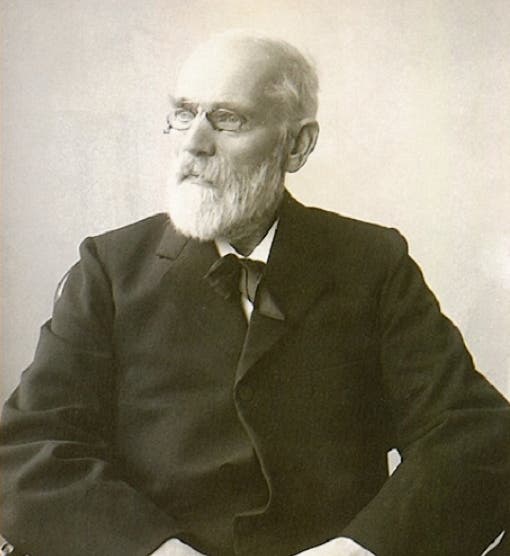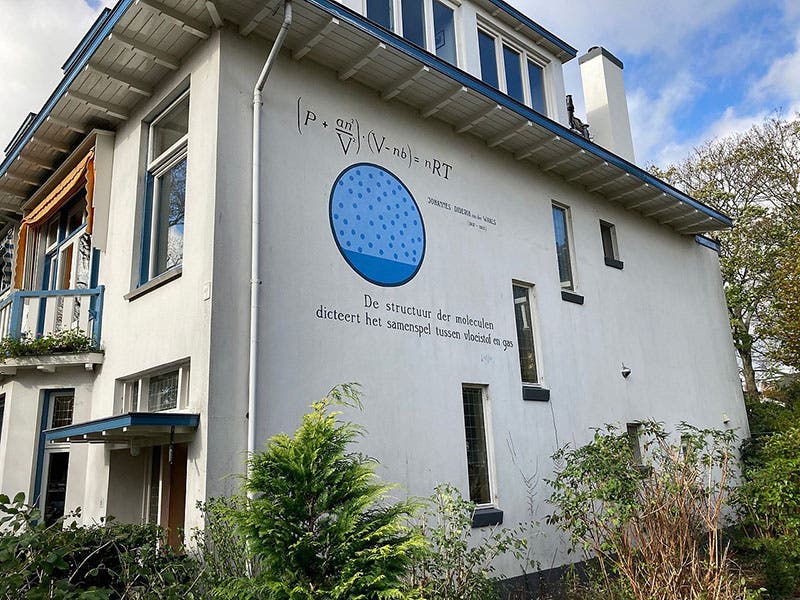Scientist of the Day - Johannes Diderik Van der Wals
Johannes Diderik Van der Waals, a Dutch physicist, was born Nov. 3, 1837. Van der Waals was one of the pioneers of molecular physics. The molecule was a shady entity in the late 19th century, useful for theorists, but to many physicists, not demonstrably real. Van der Waals not only assumed that molecules actually exist, but he demonstrated, by taking into account the facts that molecules occupy space and interact with each other, that one could produce more accurate descriptions of such things as the state of gases. Gas laws of the time, which went back to Robert Boyle and Edmé Mariotte, were ideal laws, treating molecules as points and assuming that point molecules do not react with each other. In his doctoral dissertation at Leiden, published in 1873, Van der Walls modified the ideal laws to take into account the space occupied by molecules, and the fact that real molecules, unlike ideal points, do attract and repel each other. He was also able to show that the transition from liquid to gas is a continuous transition, not an abrupt, discontinuous one.
His thesis was called: On the Continuity of the Gas and Liquid State. It contained what is called his equation of state. We have a pristine copy of this work in our collections, in its original paper wrapper, and now housed in a handsome clamshell box (second image, above). I opened it (third image, below) to what appears to be a version of his equation of state, where p, v, and t represent pressure, volume, and temperature (the old ideal law was simply pv = kt), and the other terms incorporate the size and interaction of molecules – b, for example, represents the volume of the molecules themselves, which must be subtracted from the volume of the gas. Van der Waals’ equation of state is not as simple and harmonious as the ideal gas law, but it is much better at describing what really happens, and it predicts when a gas will condense to a liquid state. A transcription of his equation of state may be found on the outside of a building at the gymnasium in Leiden (fourth image, below)
Van der Waals was also one of the first to describe intermolecular forces. Before Van der Waals, the principal forces at the atomic level were covalent or ionic bonds, which, for example, hold together the Na and Cl components of NaCl, table salt. Van der Waals showed there was another, much weaker force that could attract or repel molecules. It is the result of the fact that while a molecule may be electrically neutral, it might still have a preponderance of positive or negative electrical charge on one side, and hence may attract or repel a similar molecule that is electrically unbalanced. This Val der Waals force, as it is now called, has a very short range, but it turns out to be quite real. It appears to be the force that allows a gecko to walk upside down on the ceiling. This short YouTube video does a very nice job of explaining the Van der Waals force and the ambulatory habits of geckos.
In 1877, Van der Waals was offered the post of professor of physics at the newly formed University of Amsterdam, and he held that post until his retirement in 1907. In 1910, he was awarded the Nobel Prize in Physics for his equation of state. The successful liquefaction of nitrogen, oxygen, hydrogen, and helium was a direct result of Van der Waals work. In our post on Heike Kamerlingh Onnes, who was the first to liquefy helium in 1908, there is a photograph of Van der Waals and Onnes together in the lab.
I could find no portrait of the young Van der Waals, the physicist of 1873. So we make do with a photo of the older Nobel Prize winner instead.
Dr. William B. Ashworth, Jr., Consultant for the History of Science, Linda Hall Library and Associate Professor emeritus, Department of History, University of Missouri-Kansas City. Comments or corrections are welcome; please direct to ashworthw@umkc.edu.









